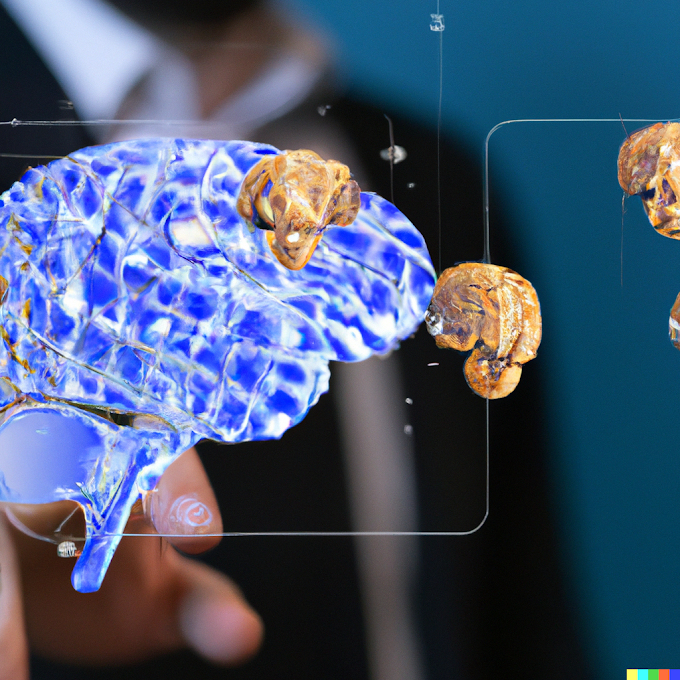Advertisement
Epigenetics: The Future of Personalized Medicine
Epigenetics refers to the changes that occur to DNA, and the associated proteins, that regulate gene expression without altering the genetic code itself. These changes can be influenced by environmental factors and can be heritable, meaning they can be passed down from one generation to the next. This has significant implications for the future of medicine, as resear…
Read moreSoftware applications in the biomedical sciences
Software applications play a crucial role in the development of medical research and healthcare. In the biomedical sciences, software is frequently used in the following areas: Diagnostic imaging: Medical images like X-rays, CT scans, and MRI scans are processed, analyzed, and viewed with the help of software for medical imaging. Physicians can use this software to…
Read moreArtificial Intelligence and Machine Learning in Healthcare
Artificial Intelligence (AI) and Machine Learning (ML) have revolutionized many industries, including healthcare. The use of AI and machine learning algorithms to analyze medical data and make predictions about patient outcomes is transforming the way healthcare is delivered, making it more accurate, efficient, and personalized. Medical data analysis has always been …
Read moreBioinformatics / Computational biology
Bioinformatics is a rapidly growing field that combines biology, computer science, and information technology to analyze and interpret biological data. With the exponential growth of biological data, the development of various bioinformatics databases has become a crucial aspect of this field. These databases store, organize, and provide access to the large amounts…
Read moreAmniocentesis; a prenatal diagnostic test
Amniocentesis is a prenatal diagnostic test that is performed during pregnancy to detect potential genetic or chromosomal abnormalities in a developing fetus. The test is usually recommended for women who are considered to be at higher risk for these types of conditions, such as women over the age of 35 or those with a family history of genetic disorders. During an …
Read moreAnimal Biotechnology: Understanding its Importance and Applications
Biotechnology has revolutionized the way we approach various fields, including agriculture, medicine, and animal husbandry. Animal biotechnology, in particular, has made significant progress in recent years, offering new and innovative ways to improve animal health, productivity, and welfare. In this article, we will take a closer look at animal biotechnology, its …
Read moreMonoclonal Antibodies: An Introduction to Teplizumab-mzwv
Monoclonal antibodies (mAbs) are laboratory-made molecules that mimic the immune system's ability to fight off harmful substances, such as viruses. They are used as a treatment for various medical conditions, including cancer, autoimmune diseases, and infectious diseases. In recent years, mAbs have become increasingly popular in the fight against COVID-19, with…
Read moreCRISPR-Cas9 Gene Editing: Revolutionizing the Future of Medicine
Genetic engineering has come a long way since its inception, and the development of CRISPR-Cas9 gene editing has taken it to new heights. CRISPR-Cas9 is a revolutionary tool that enables precise, efficient, and flexible editing of genes, making it one of the most promising technologies in the field of genetics today. CRISPR-Cas9 works by using a molecule called RNA…
Read moreSynthetic Biology: Engineering Life for a Better Future
Synthetic biology is an interdisciplinary field of science that combines the principles of biology and engineering to create novel biological systems and modify existing ones. The aim of synthetic biology is to design, construct, and manipulate biological systems for various applications, ranging from biomedicine and biotechnology to environmental protection and en…
Read moreThe First Living Robot is now reproducing its own kind!
Xenobots can Reproduce now . AI-designed (C-shaped) organisms push loose stem cells (white) into piles as they move through their environment. Credit: Douglas Blackiston and Sam Kriegman Presently researchers at the University of Vermont, Tufts University, and the Wyss Institute for Biologically Inspired Engineering at Harvard University have found an altogether new …
Read moreHyperbaric oxygen therapy can reverse aging.
Hyperbaric oxygen therapy can reverse aging. Hyperbaric oxygen therapy Maturing can be described by the dynamic loss of physiological uprightness, bringing about impeded capacities and defenselessness for sicknesses and demise. This organic disintegration is viewed as a significant gamble factor for malignant growth, cardiovascular sicknesses, diabetes, and Alzheim…
Read moreHave you ever heard of a LIVING ROBOT?
LIVING ROBOT XENOBOT Living Robot created from stem cells The first 'robots', depicted in the 1921 play R.U.R. by the Czech essayist Karel Čapek (the word is Czech for 'worker') were not produced using steel and constrained by hardware yet were beefy and independent. Čapek's assembling cycle, in which organs and different parts were produced usi…
Read moreThe science of borrowing organs from other organisms.
Xenotransplantation Transplantation of organs Xenotransplantation is any method that includes the transplantation, implantation, or imbuement into a human beneficiary of either (a) live cells, tissues, or organs from a nonhuman creature source, or (b) human body liquids, cells, tissues, or organs that have had ex vivo contact with live nonhuman creature cells, tis…
Read moreTranslate
Hidden Biology (podcast)
ADS
Followers
Search This Blog
ADS
Contact Form
Popular Posts
Recent Posts
ADS
Hidden Biology(podcast)
Popular Posts

Why Infection Does Not Always Occur?

What is making you always SICK?













.jpeg)
Social Plugin